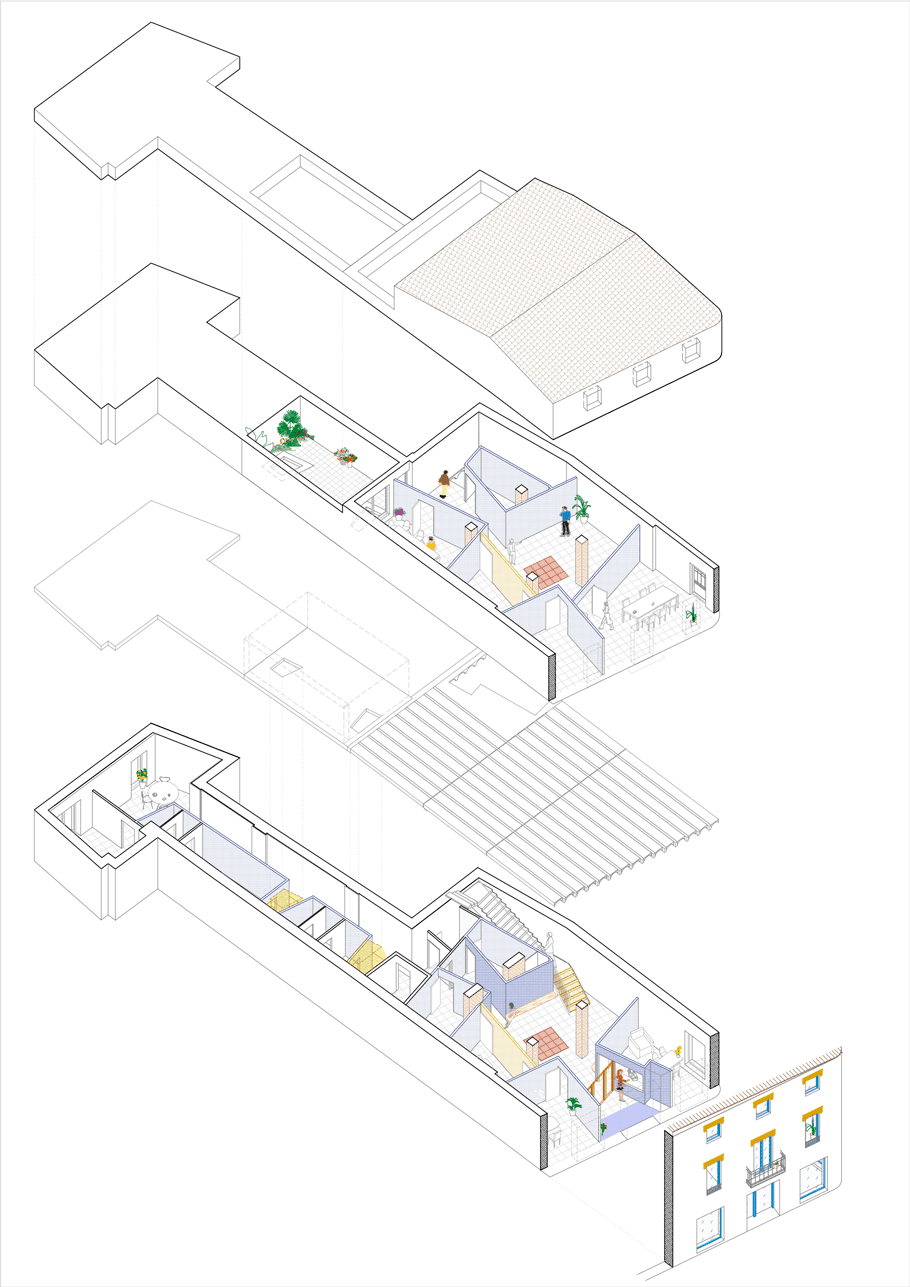
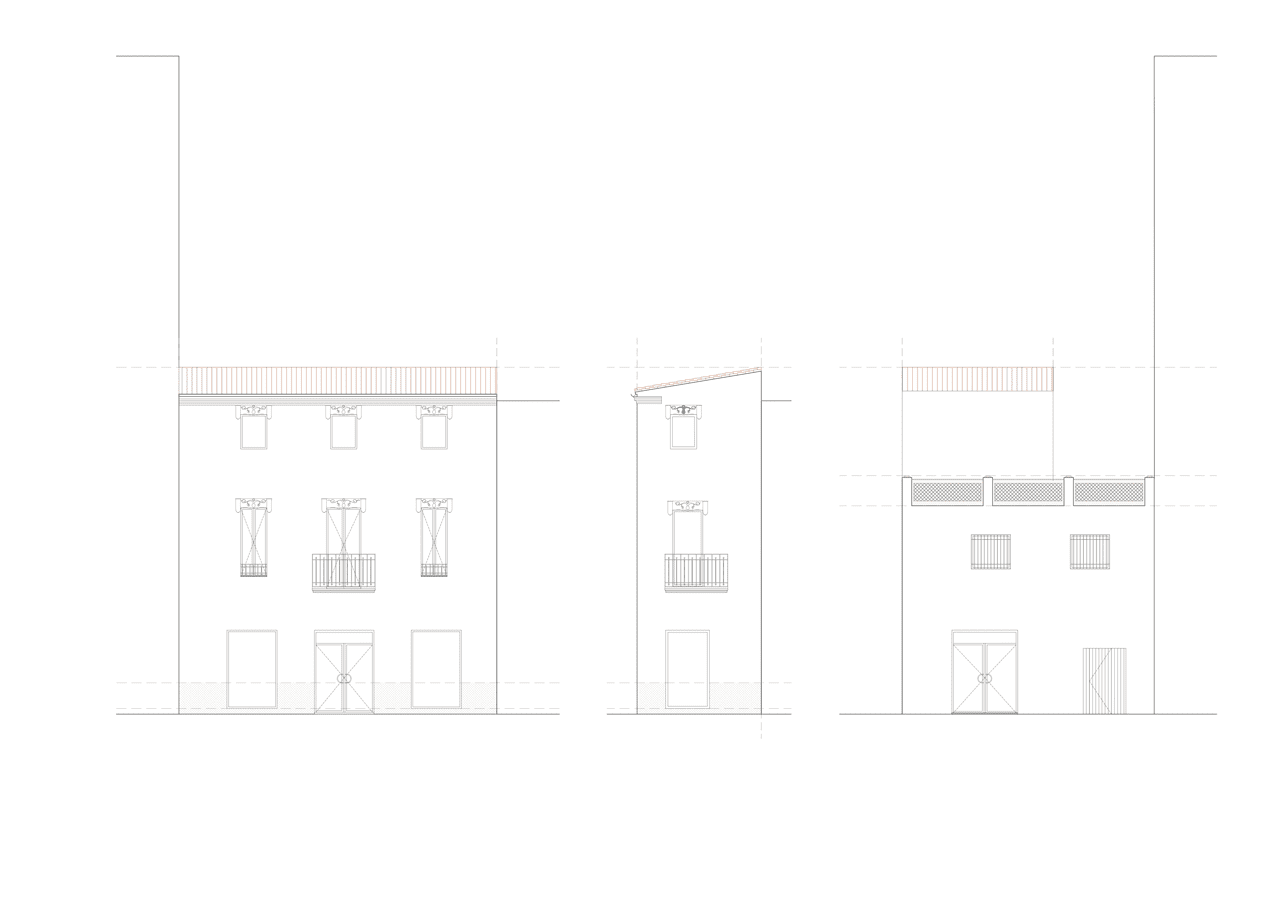
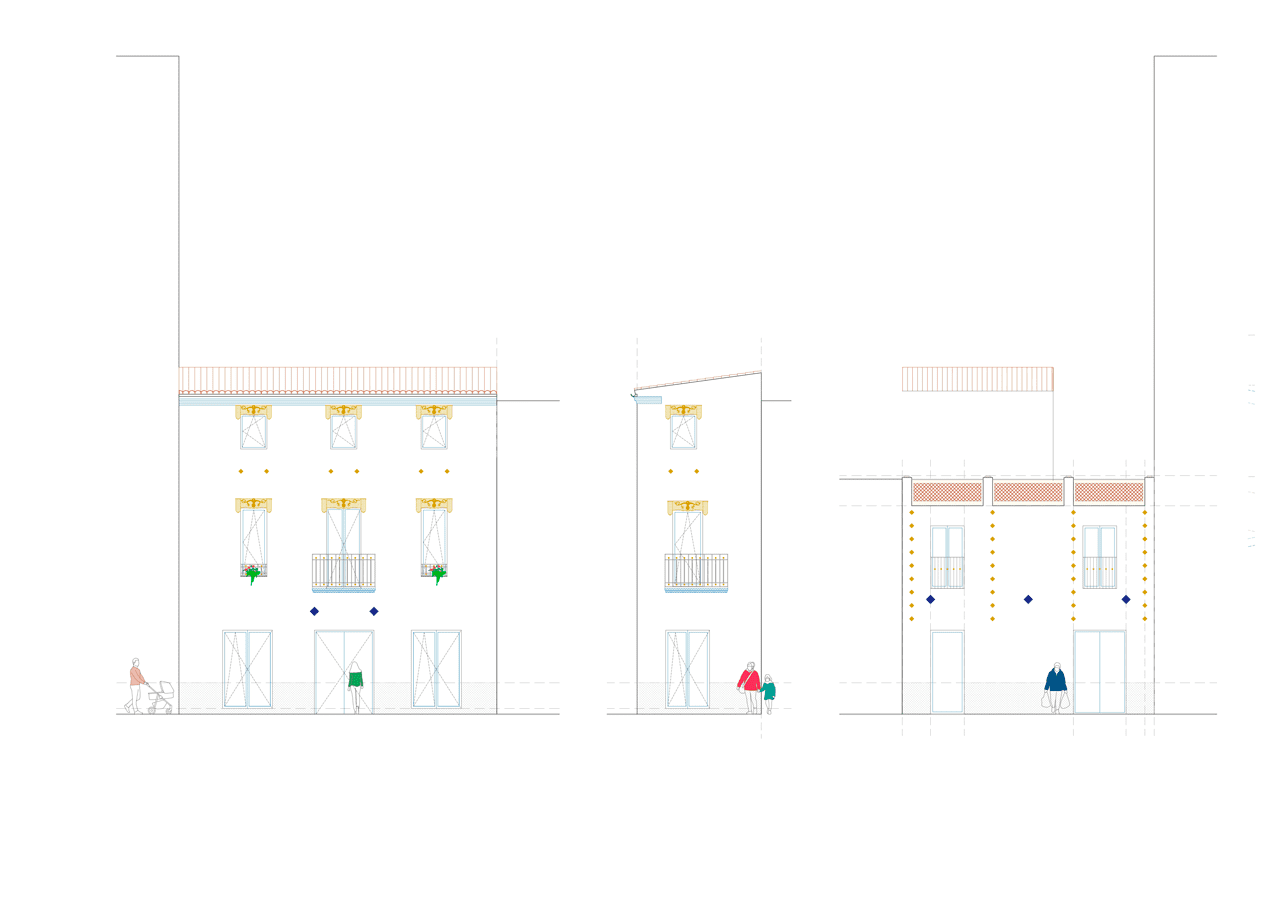
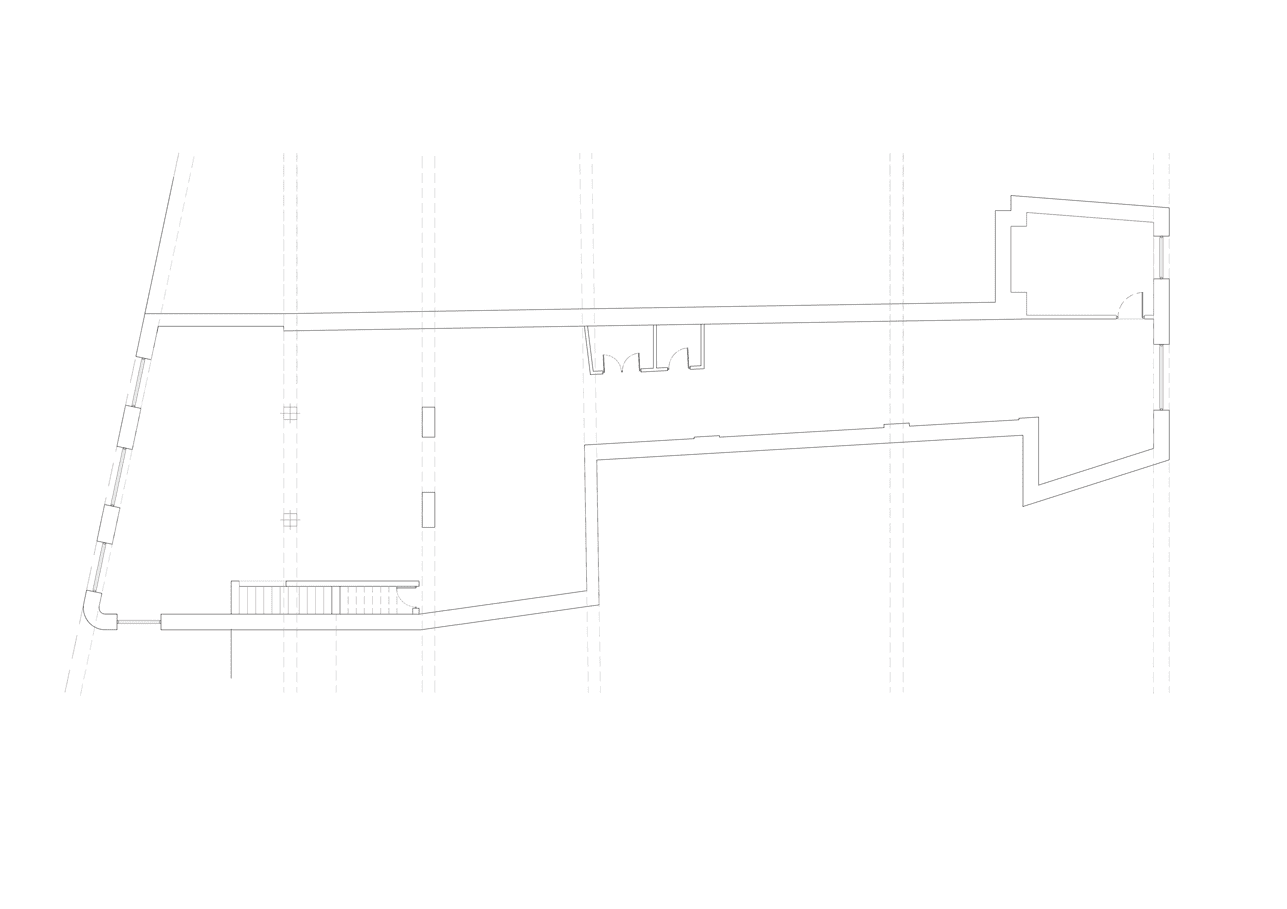
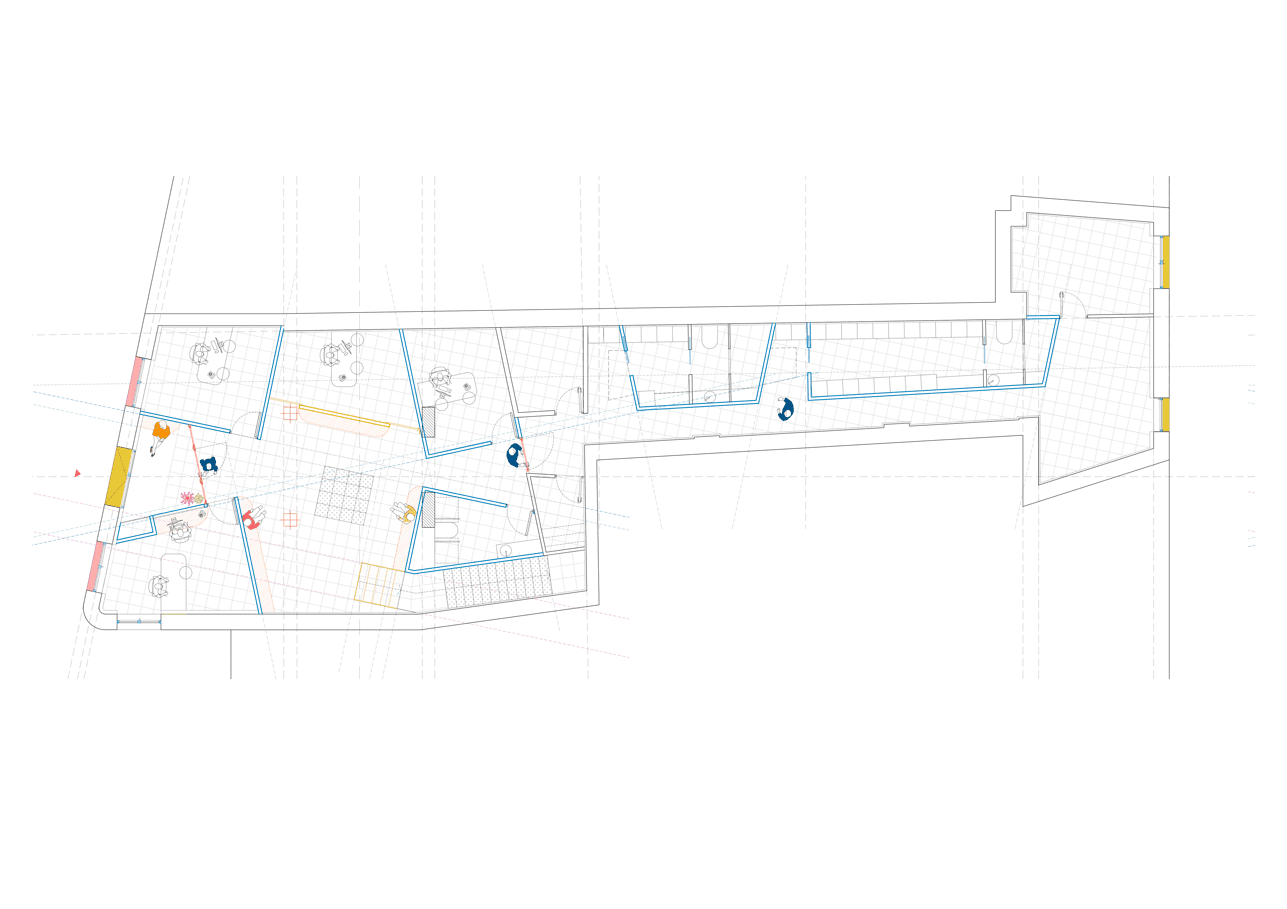
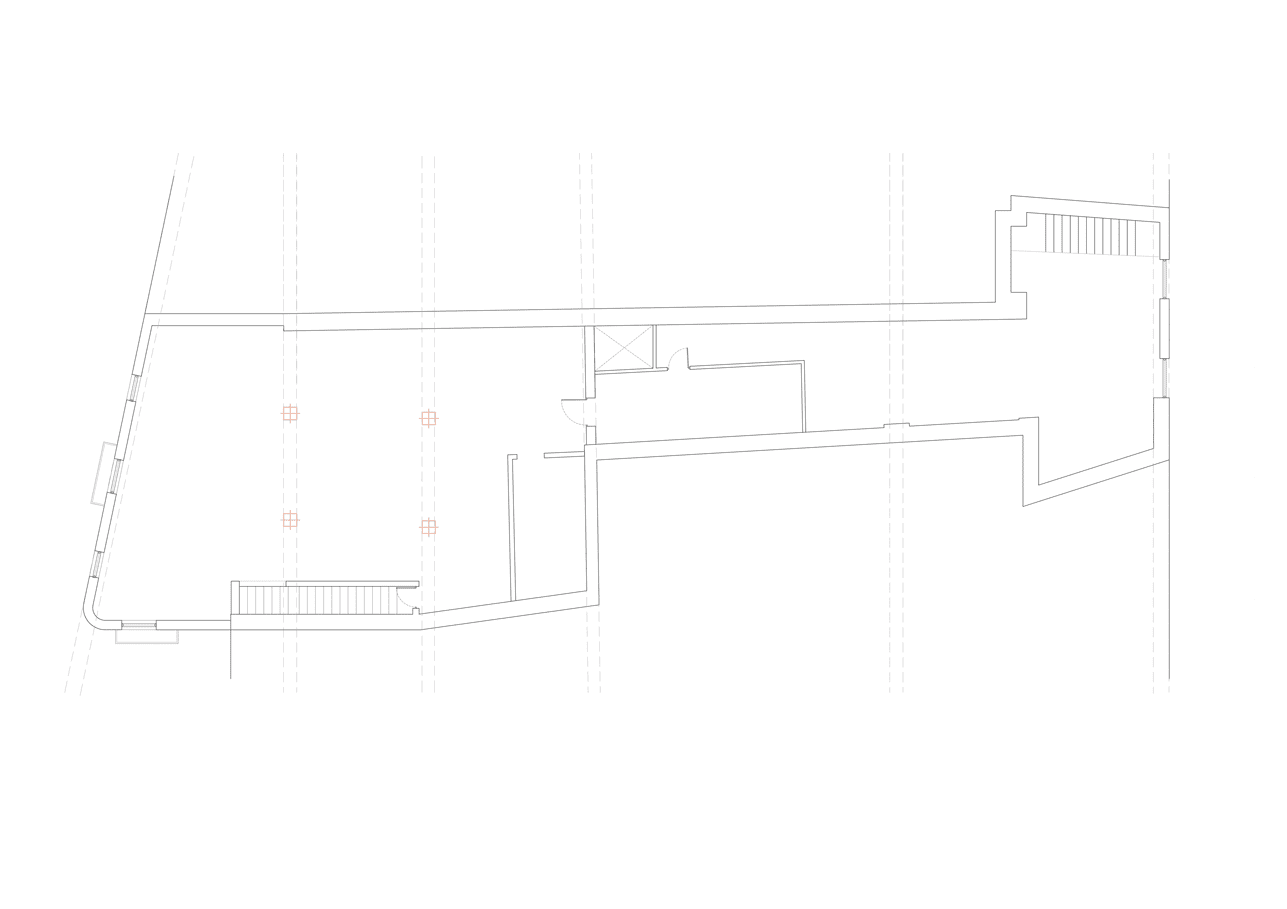
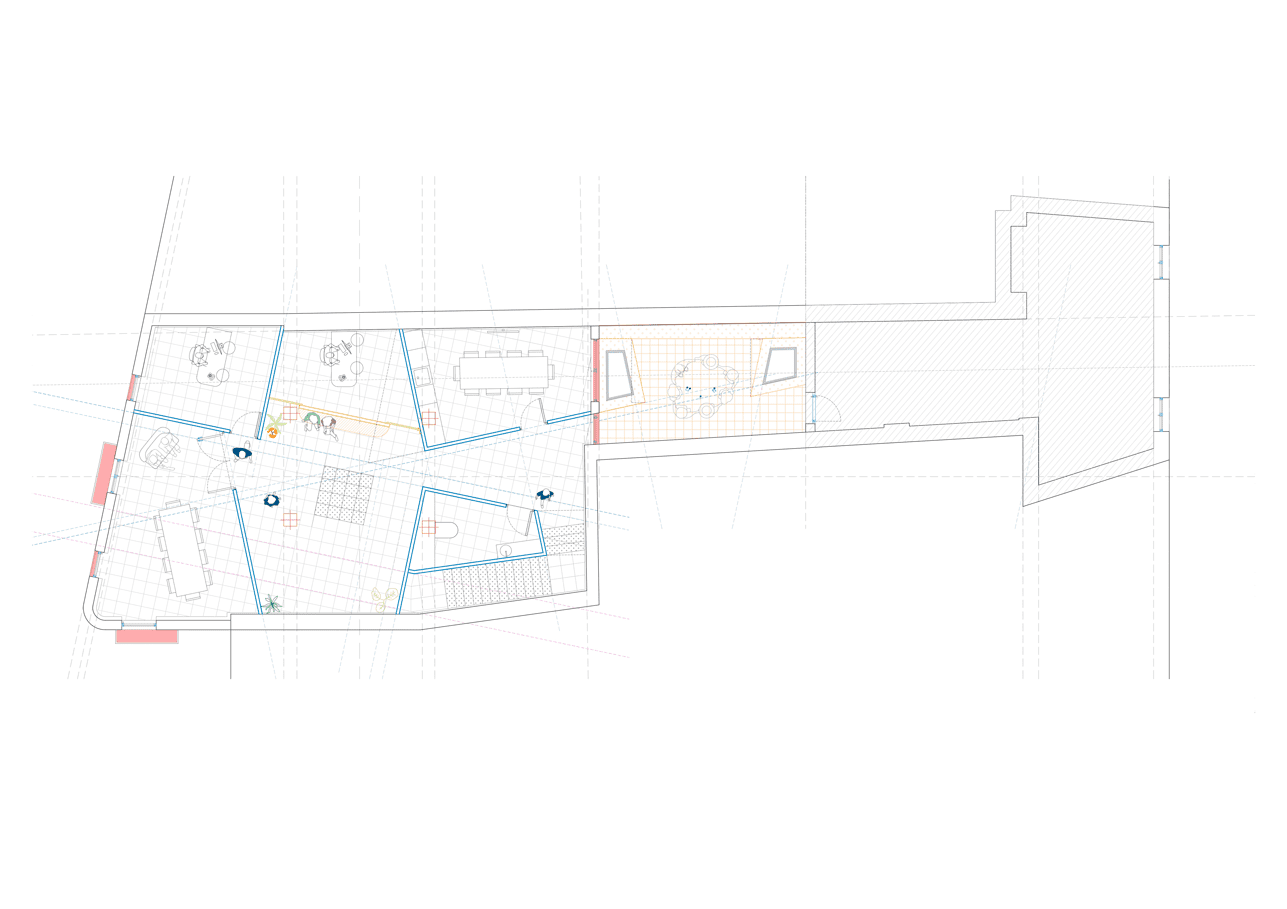
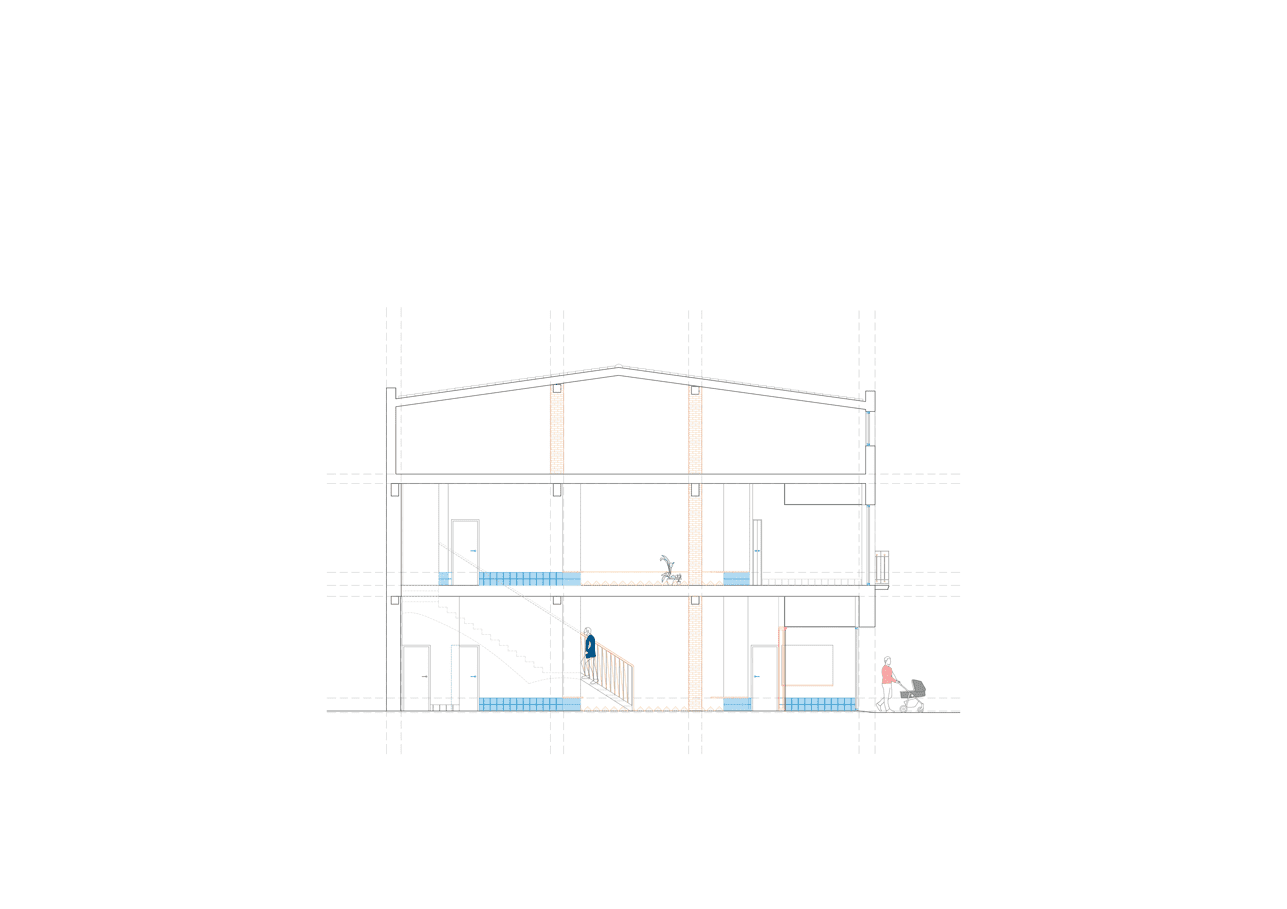
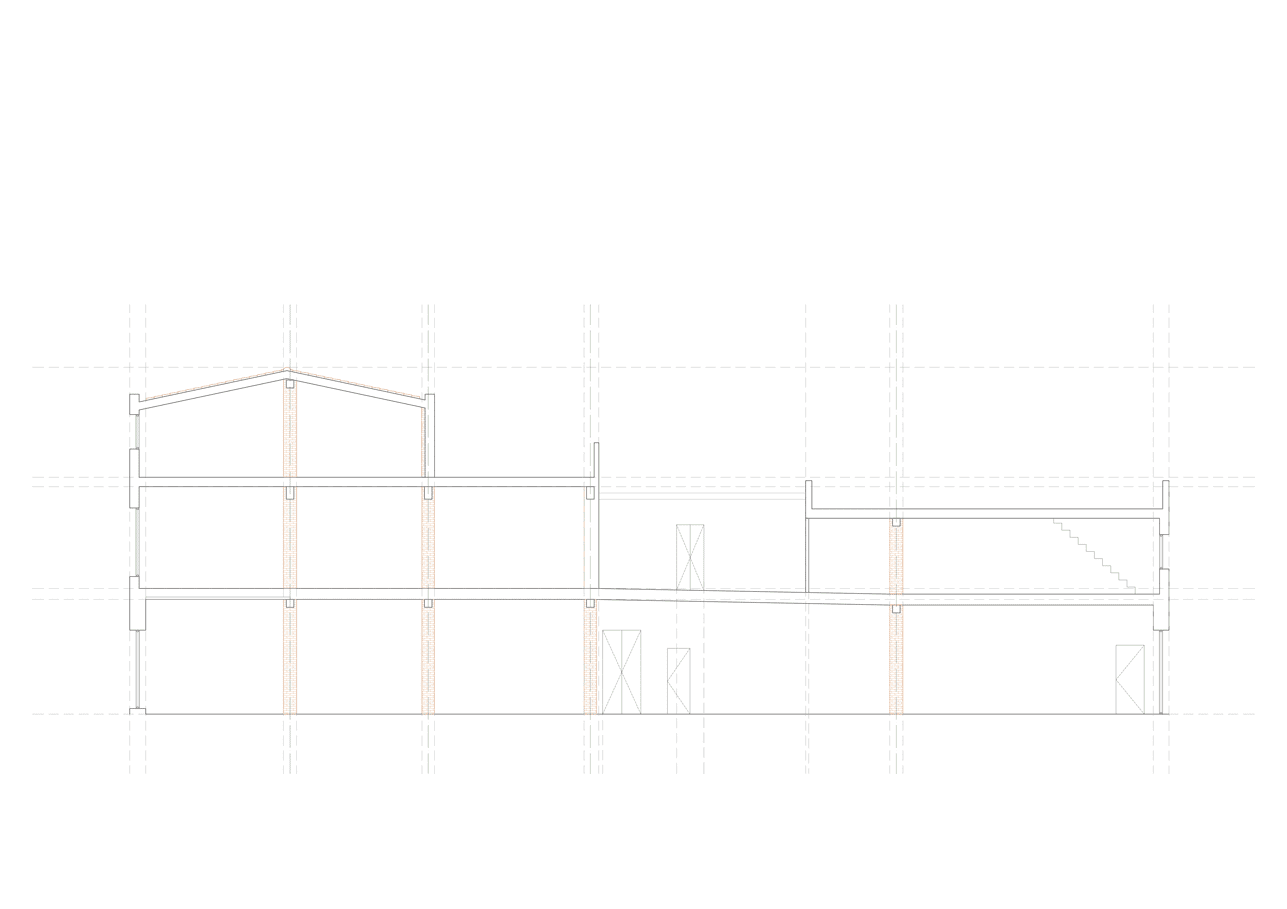
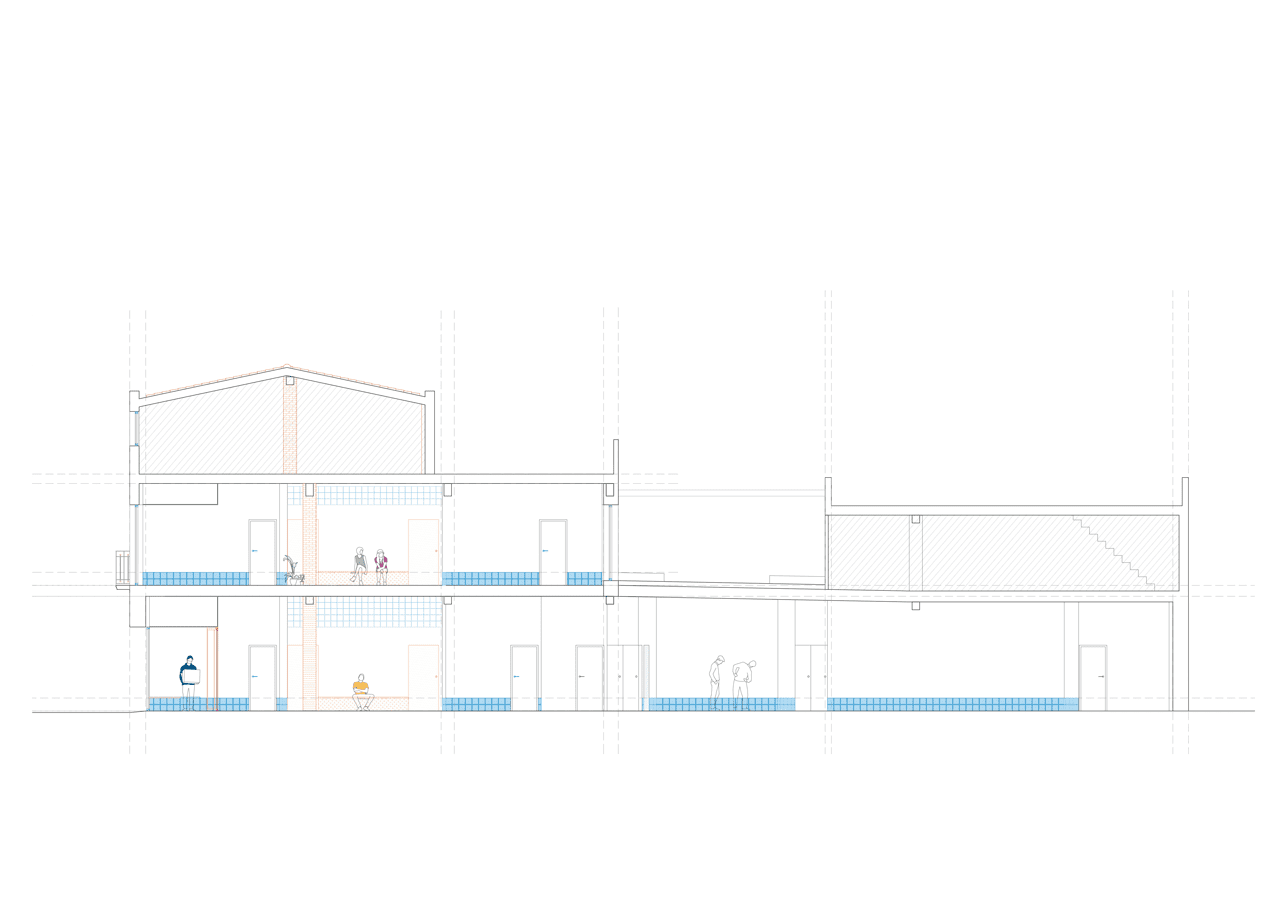
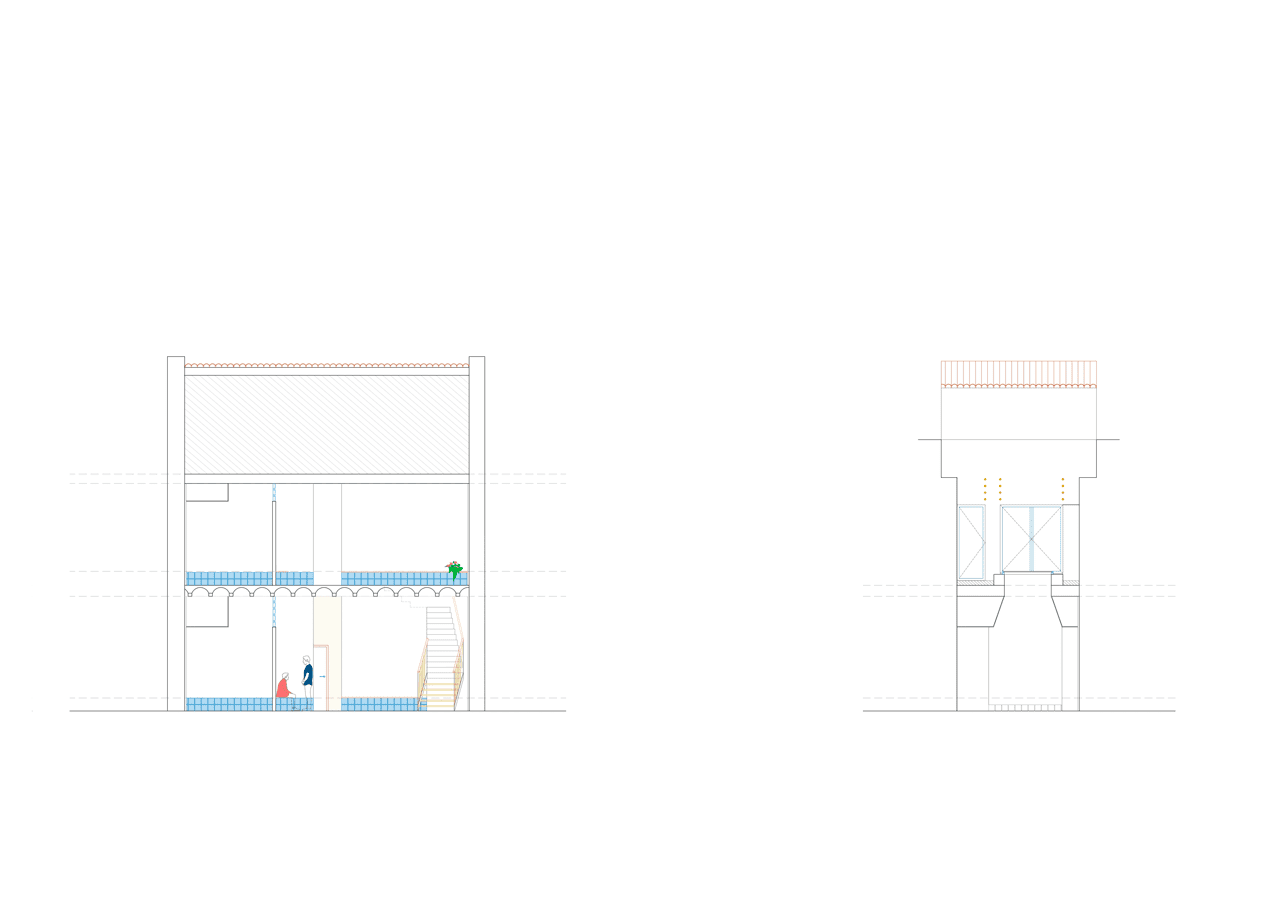

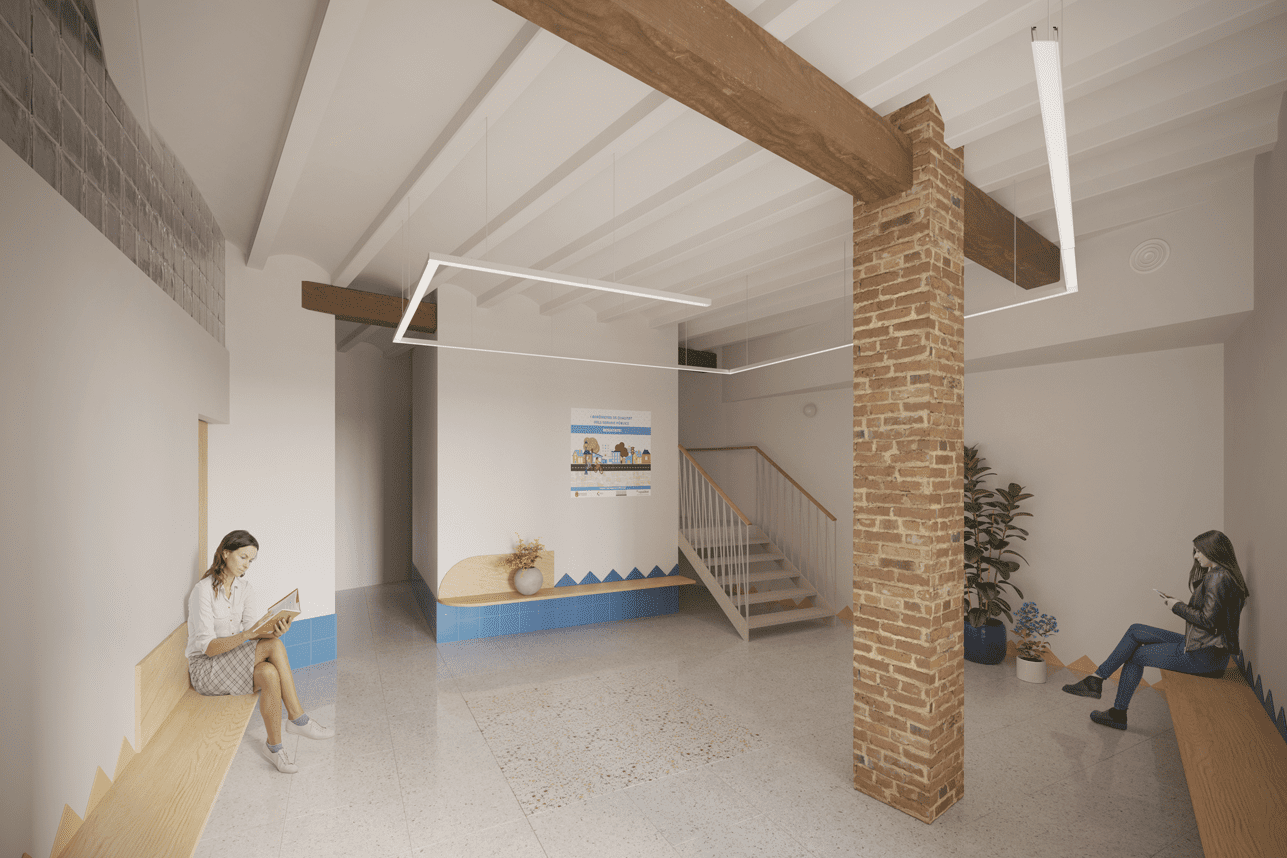
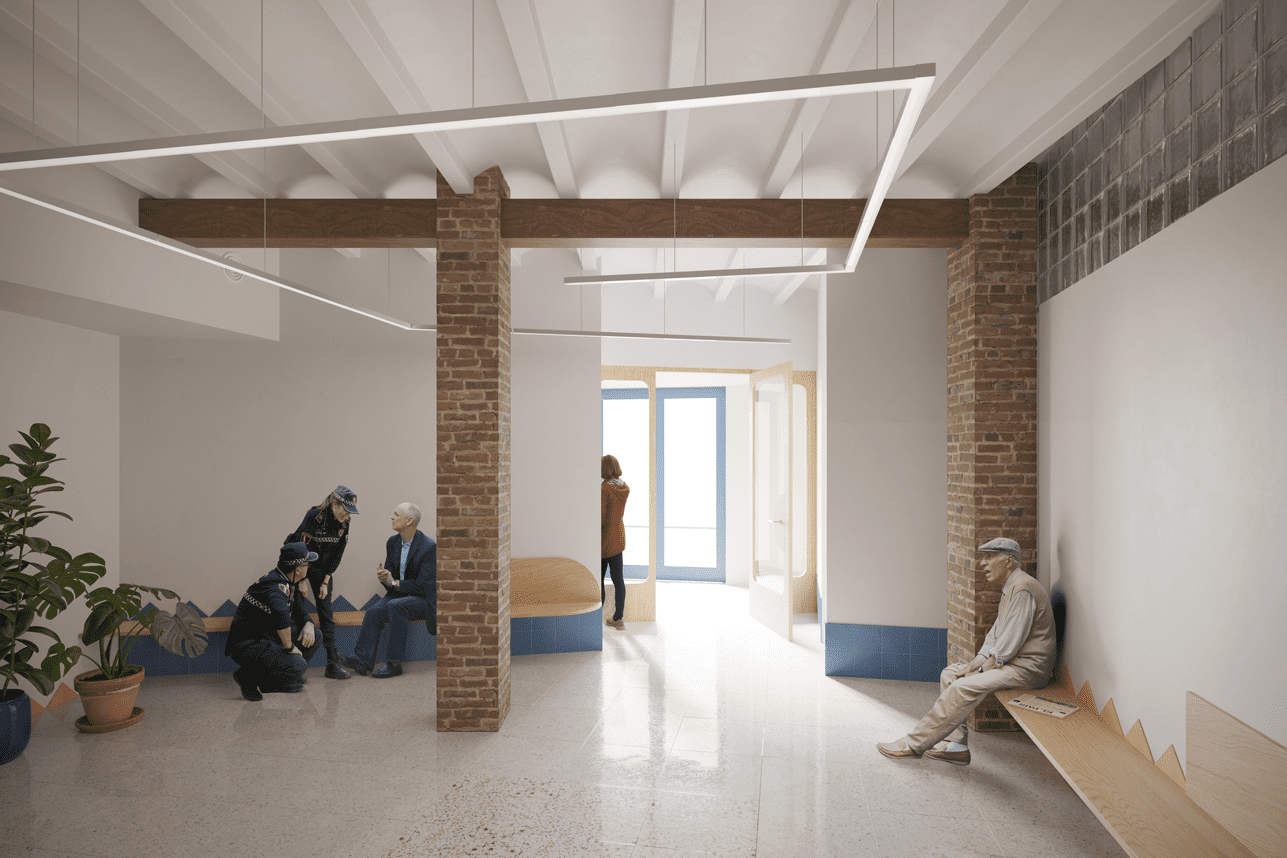

Sede de la Policía Local de Castelló
Maria Luz Gómez. Architecture student
Drawfield. Architectural imagery
Intervention on a house dating from 1955 in Castelló to house the new headquarters of the Local Police. The volume of the building is a rectangular prism with two of its sides between party walls. Facing the main entrance on Calle Ramón y Cajal, it has a ground floor plus two upper floors and a sloping roof. On the secondary façade on Calle Maestro Serrano, it has a ground floor plus a first floor and a flat roof. The new proposed layout will be located in the entire ground floor space, 261.20 m2 built, and a delimited area of intervention on the first floor of 155 m2 in total.
The project arises from the need of the Castelló police team to expand and improve their facilities, as the current premises in which they are located have many shortcomings: they barely have space to work as the number of rooms is far from the needs of the moment, the documentation is stored in external buildings as it is impossible to have it in the same headquarters, they barely have natural light,… and what is more, they have a lack of space to work in. … and what is most uncomfortable, according to Jaume, the head of the local police, is not being able to receive the residents of the village to collect their testimonies in intimate and delicate rooms prepared for this purpose.
The programme is the result of both the requirements imposed by the administration and the needs of the Castelló police team, gathered in several meetings with them.
At all times, the spaces have been sized with the provision of current services and the needs of future uses in mind, spaces that allow the staff to grow and specific posts to be created in relation to new areas to be incorporated into the Local Police Force, paying special attention to equality measures. The police of the 21st century requires the incorporation of more women and higher quotas in the command scale; and the administration, as well as the buildings in which their work is housed, must articulate adequate processes for this.
A great deal of attention has been paid to creating a programme that favours attention to the public on such necessary issues as the gender perspective. To this end, safe, competitive spaces have been created with a view to generating an institutional culture that allows for a system of respect and attention to the rights of the most vulnerable, which has led us to avoid hidden corners that generate insecurity and to pay special attention to the lighting of accessible spaces and itineraries, while at the same time spaces have been designed in which to meet to discuss such intimate issues as the testimonies of women victims of gender-based violence.
The existing geometry will play a very important role in establishing the new rules to fit the distribution, the aim is to find the balance of the existing with the new that is proposed. We will take both the inclination of the main façade and its perpendicular and the symmetry of these to create the geometric play that will house and shape the new spaces.
A long longitudinal route will run through the building, giving privacy of use as you walk along it. Two skylights will appear above it to provide the necessary lighting in the darkest part of the route as well as indicating access to the users’ changing rooms. Communication between the two floors will be via a vaulted staircase.
The envelope will be delicately and discreetly intervened, as the intention at all times is to maintain the essence of the original house, but to give it a corporate character with our slight intervention.
Two colours, ochre and blue, will be the protagonists to dress the building both inside and out. Two colours in which both the neighbours and the users of the building have to identify at all times the importance of having a house of these characteristics, supporting them in each of their possible problems.
On the outside, blue exterior carpentry, locksmithery with parts in ochre and light ceramic touches in blue and ochre.
Inside, a terrazzo floor will be laid throughout the entire floor with a change of grain and tone in the waiting area to give the warmth required by the use of the building, reinforcing this sensation with integrated wooden furniture. Blue and ochre ceramic pieces will again be placed on the skirting boards, strengthening the corporate idea initiated on the exterior. Paving will also appear in the rooms where natural light does not reach and to be able to have these spaces more illuminated to strengthen the idea of creating safe spaces.

